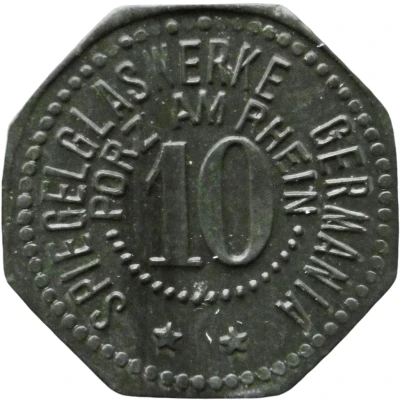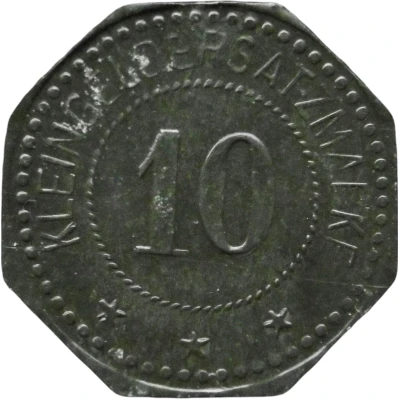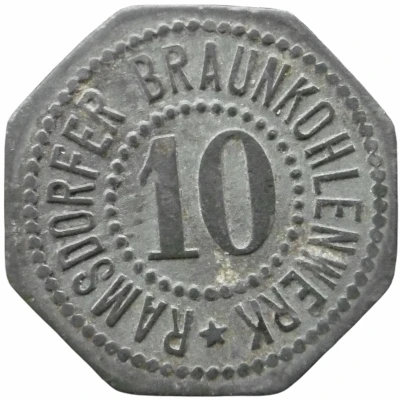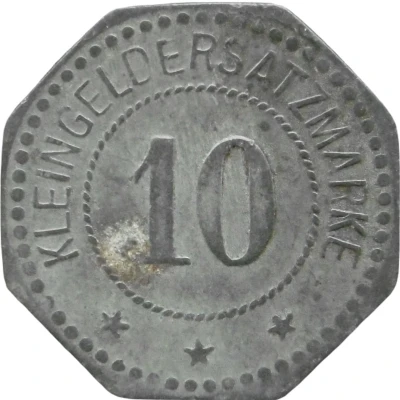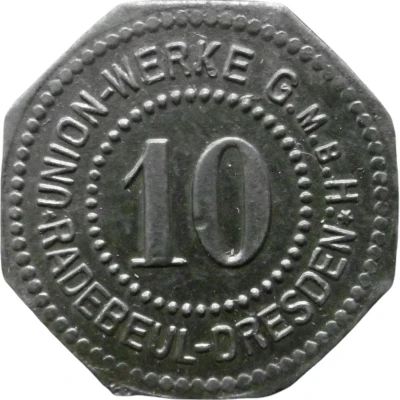
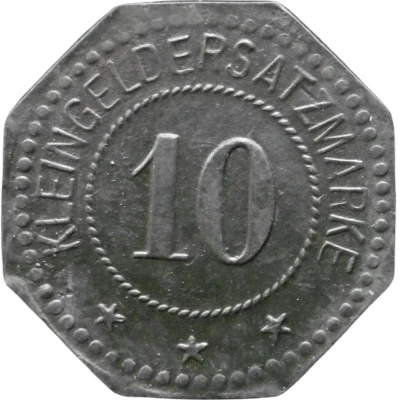

© Willem63 (CC BY-NC-SA)
10 Pfennigs - Radebeul-Dresden (Union Werke G.M.B.H.) ND
| Zinc | 1.7 g | 20.8 mm |
| Issuer | German notgeld (Germany) |
|---|---|
| Type | Standard circulation coin |
| Value | 10 Pfennigs (10 Pfennige) (0.10) |
| Currency | Mark (1914-1924) |
| Composition | Zinc |
| Weight | 1.7 g |
| Diameter | 20.8 mm |
| Thickness | 0.9 mm |
| Shape | Octagonal (8-sided) |
| Technique | Milled |
| Orientation | Medal alignment ↑↑ |
| Demonetized | Yes |
| Updated | 2024-10-04 |
| Numista | N#292060 |
|---|---|
| Rarity index | 97% |
Reverse
Pearl rim, legend surrounding beaded circle with denomination centered
Script: Latin
Lettering:
KLEINGELDERSATZMARKE
10
★ ★ ★
Edge
Plain
Comment
Menzel: BBBFa: Metallplakate u. Blechemballagen
Interesting fact
One interesting fact about this coin is that it was part of an emergency currency issued during a time of economic crisis in Germany, specifically during the hyperinflation period of the 1920s. The coin was made of zinc, which was a cheaper alternative to traditional metals like copper or silver, and it was designed to be easily identifiable and difficult to counterfeit. Despite its low value, the coin played an important role in the everyday lives of Germans during this time, as it was widely used for small transactions and helped to alleviate the shortage of small change.
